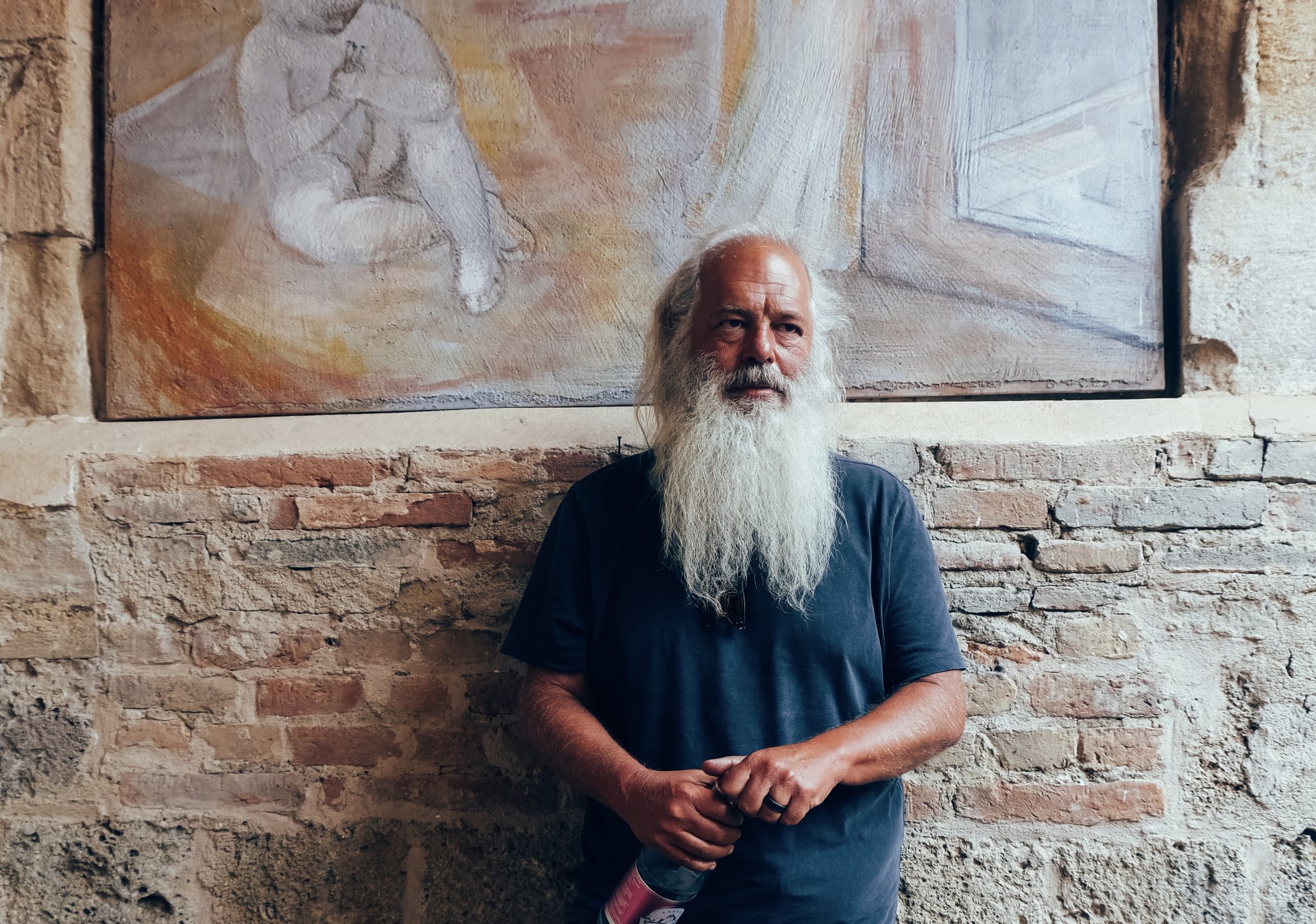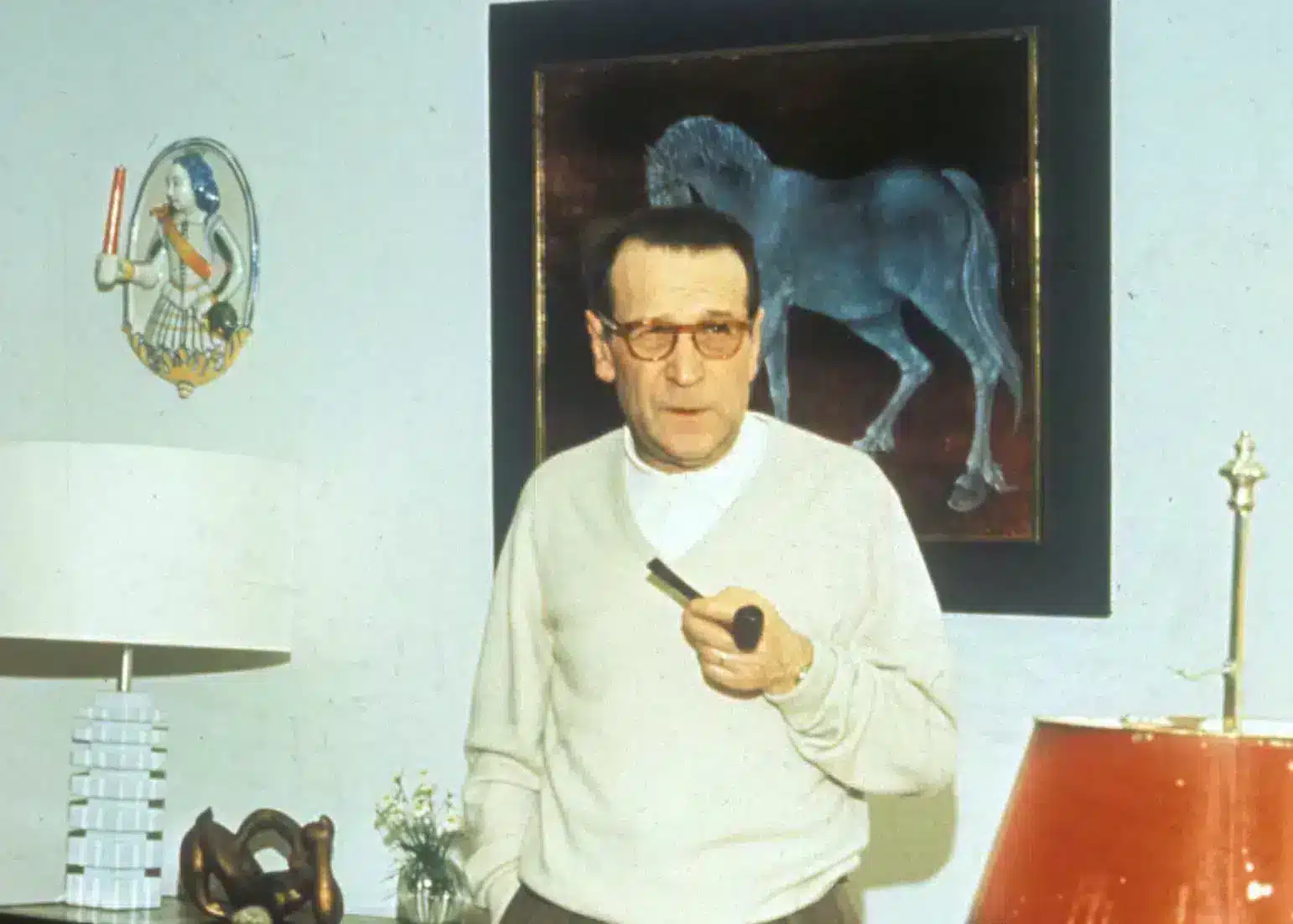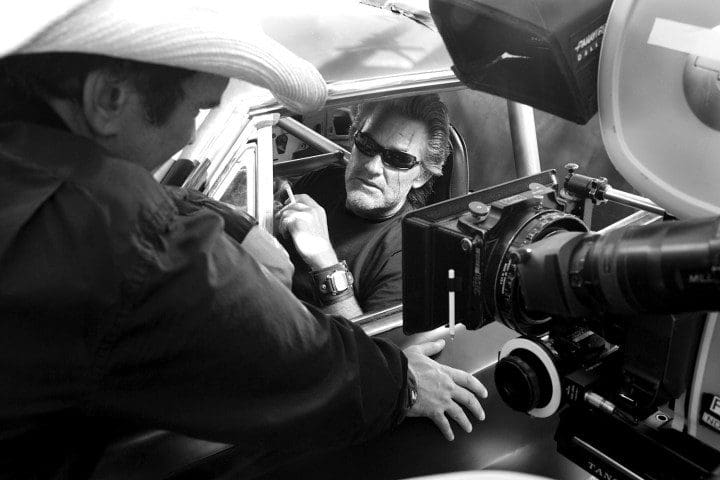
Quentin Tarantino isn’t necessarily the first director that comes to mind when you think of cars. You might sooner jump to William Friedkin, Michael Mann, or Tony Scott—filmmakers who feature pulsing (and in the case of Friedkin, pioneering) car chases and high-adrenaline set pieces.
But in fact, there’s scarcely a film in Tarantino’s filmography that doesn’t feature a motor-moment worth talking about, though not always in the way that you think. Jackie Brown’s best sequences take place in and around cars: one of them sees gangster Ordell Robbie (Samuel L. Jackson) convincing recently-paroled Beaumont Livingston (Chris Tucker) to climb into the boot of his Mercedes-Benz, unknowingly setting the scene for his own murder at Ordell’s hands.
The movie’s funniest moment doesn’t take place in a car, but instead captures the age-old problem of simply not remembering where you parked the fucking thing, as small-time crook Louis (Robert DeNiro) stomps across a shopping mall car park with the blonde Melanie (Bridget Fonda) pushing his buttons every step of the way. “Louuuuuuuiiissssss,” she taunts. “Don’t say another fucking word,” he replies, pleading through gritted teeth. It’s about as humdrum as a situation can get, until the moment Louis snaps and blows Melanie away with a few shots of his M1 pistol. “See? Just where I said it was,” he mutters, walking towards the car.
It’s not the first time in a Tarantino picture that violence, cars and the everyday have collided. In Pulp Fiction, an accidental misfire by John Travolta’s Vincent Vega sends fragments of skull and brains flying all over the interior of Samuel L. Jackson’s Jules’s 1964 Chevy Chevelle Malibu. (The entire subsequent chapter tracks the hit men’s mission to clean the blood out of its leather seats.)
Kill Bill Vol 1 & 2 are similarly chock-full of gorgeous motors, from the now-iconic Pussy Wagon 1999 Chevrolet that the Bride inherits after killing slimy male nurse Buck, to her bright yellow Kawasaki ZZR 250 with motorcycle suit and helmet to match, to the baby blue 1973 Volkswagen Karmann Ghia Convertible she uses to cruise around Acuna, Mexico. Bill’s 1969 De Tomaso Mangusta; Elle Driver’s 1979 Pontiac Firebird. The list goes on.

Tarantino’s latest film, Once Upon A Time in Hollywood, is set in Los Angeles: a city dominated by roads. Throw a late-1960s timestamp into the mix and you’ve got yourself a movie that doubles as a vintage car enthusiast’s wet dream. You’ll see Sharon Tate (Margot Robbie) float down the strip in a 1973 Porsche 911S, and the smooth-talking killing machine Cliff Booth (Brad Pitt) make a Bruce Lee sized dent in a 1968 Lincoln Continental. The film also features the glorious return of Michael Marsden’s 1966 Cadillac Coupe Deville, first seen way back in Reservoir Dogs, and the aforementioned Volkswagen convertible from Kill Bill Vol. 2, which is driven around the city by Booth, with Margaret Qualley’s feet on the dashboard (a Tarantino staple if there ever was one). It’s a car film through and through, down to its smallest parts, and it fits so comfortably inside the DNA of the culture Tarantino is tributing that you never even really notice it.
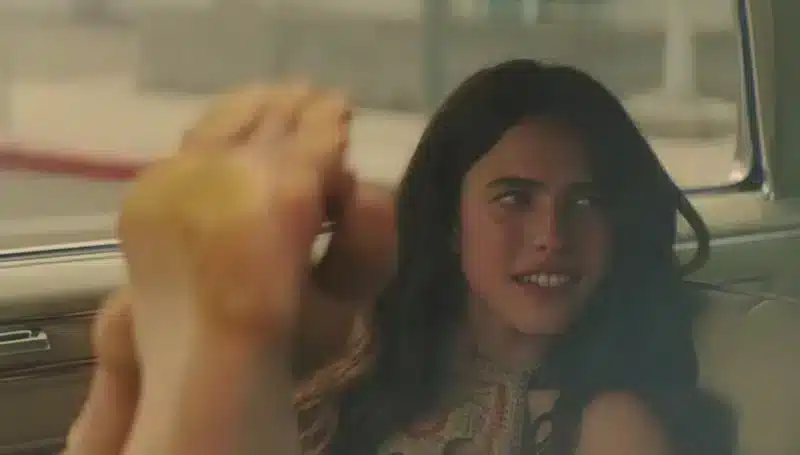
Even the film’s soundtrack—Formatted like a KHJ-AM broadcast—is a love letter to cruising around LA with the radio blaring. Tarantino and music supervisor Mary Ramos reportedly listened to over 14 hours of KHJ broadcasting to create the soundtrack, which includes exclusively pre-1970s music from the director’s vinyl collection alongside soundchecks, root beer advertisements, weather reports and a promo for the 1966 Batman TV show.
But Tarantino’s engine-obsessed magnum opus is without a doubt Death Proof, a film whose lifeblood are the cars and people driving them. One half of his Grindhouse exploitation double feature made with like-minded director Robert Rodriguez, the film follows serial killer Stuntman Mike (Kurt Russell), who lures young women into his 1971 Chevrolet Nova, which he has rigged to be crash-proof. Unfortunately for his unwitting passengers, he’s only applied the modification to the driver’s seat alone. After using the death mobile to murder a group of drunken women (in a horrific, all-practical sequence in which faces are mowed down by spinning tires and bodies are decapitated) he sets his headlights on new victims who prove to be more than he bargained for.

Zoe Bell is the heart of Death Proof. The New Zealand stuntwoman, whose mark has been left on every Tarantino film from Kill Bill to Once Upon A Time in Hollywood, is given center stage as the leader of her sisterhood, consisting of herself—playing herself—Rosario Dawson as Abernathy, Tracie Thoms as Kim, and Mary Elizabeth Winstead as Lee. In the film, Zoe has caught wind of a 1970 Dodge Challenger (the same type from classic car movie Vanishing Point) knocking around Tennessee, and is determined to take it for a spin.
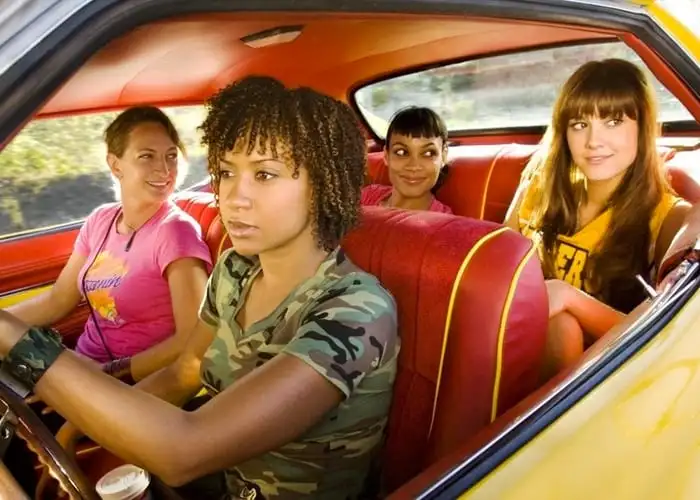
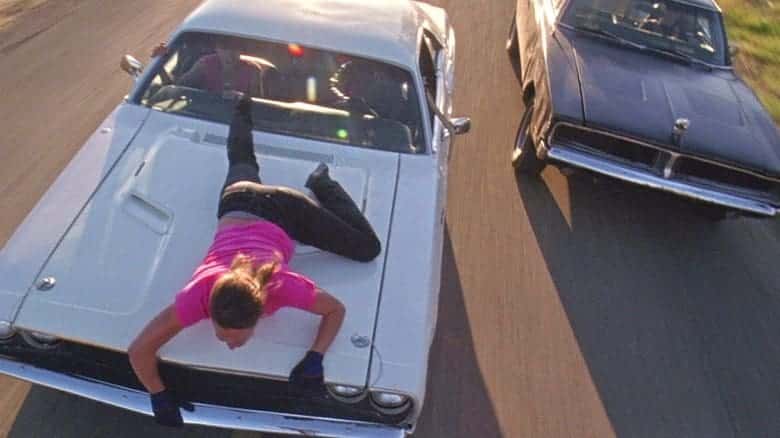
Now, when you have a bonafide stuntwoman as the lead of your big car movie, and her foot on the pedal of a Dodge, you’ve pretty much hit the jackpot. Tarantino doesn’t waste the opportunity, ending Death Proof with a fifteen minute-long car chase in which Zoe and her crew hunt Stuntman Mike across a sprawling off-road Tennessee track. The massive set piece is anchored by Bell, who at one point rides the hood of the Dodge as Mike, hot on their tail, sends it careening violently from side to side at a speed of over 90 mph. Tarantino, predictably, didn’t care much for CGI, so Bell and her fellow stunt people, including Tracy Keehn-Dashnaw, Chrissy Weathersby Ball and legendary Buddy Joe Hooker, were tasked with bringing the violent car collisions to life. “Quentin wants real action,” said stunt coordinator Jeff Dashnaw. “Bullitt, French Connection-type action where you didn’t use tricks…I got to give props to Trazy, Buddy and Steve [Davison]; they’ve all turned cars over, they’ve all done collisions, but not like this.” It’s Tarantino’s affliction for the old-school art of stunt work that elevates Death Proof from B-movie homage to automotive masterpiece. But audiences didn’t always think so. Upon its release, Grindhouse flopped at the box office, and Death Proof along with it. Tarantino has since described the film as his worst feature. “But for a left handed movie, it wasn’t so bad right?” he adds. That’s an understatement. As far as car films go, Death Proof is like a stick of dynamite.


